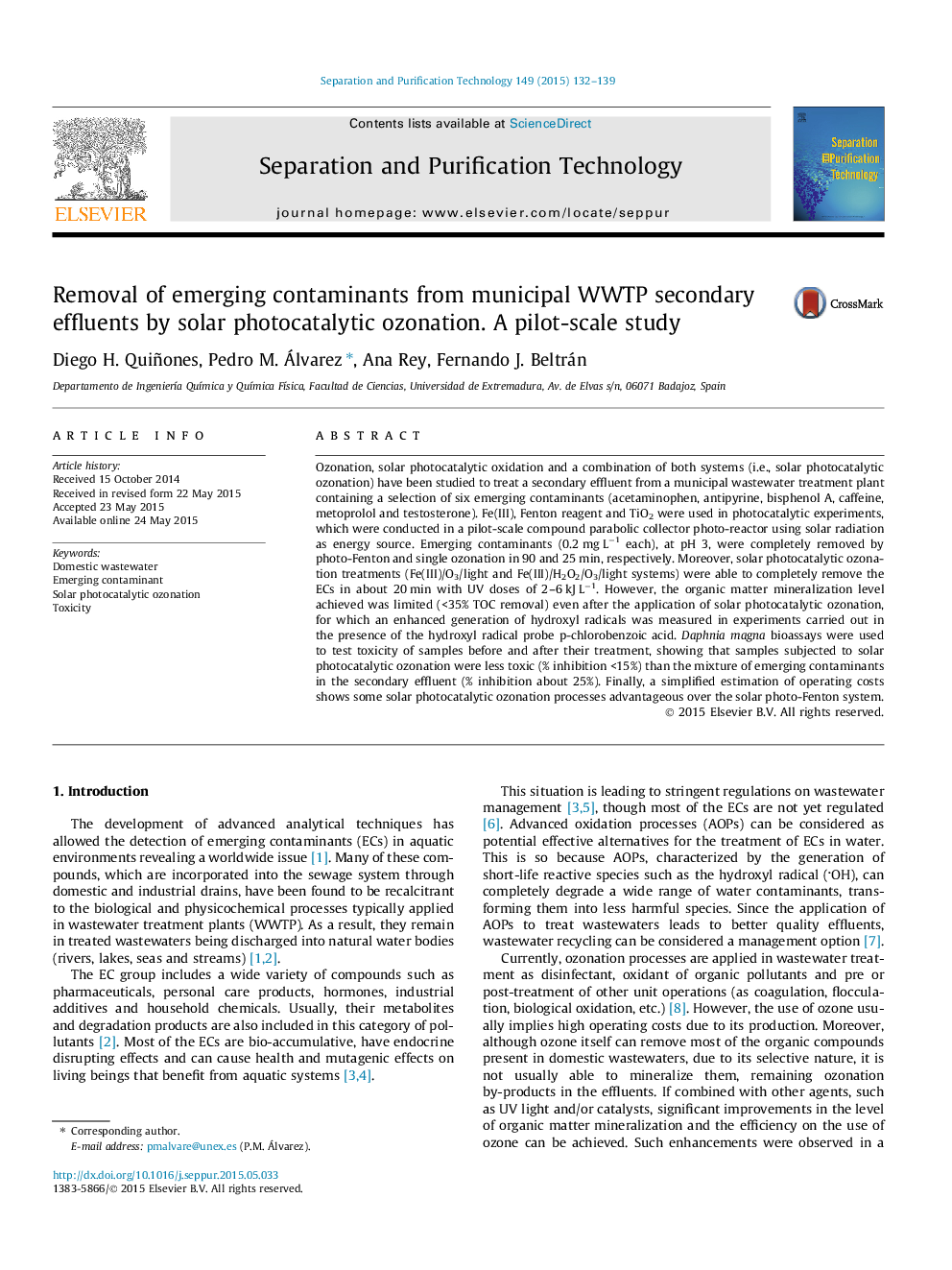| کد مقاله | کد نشریه | سال انتشار | مقاله انگلیسی | نسخه تمام متن |
|---|---|---|---|---|
| 640574 | 1456970 | 2015 | 8 صفحه PDF | دانلود رایگان |
• Emerging contaminants were completely degraded by most of the AOPs applied.
• Synergistic effects were observed when combining ozone and photocatalytic oxidation.
• Iron-based photocatalytic ozonation led to EC-free, non-toxic, biodegradable effluents.
• Iron-based photocatalytic ozonation could be a cost-effective tertiary treatment of municipal wastewaters.
Ozonation, solar photocatalytic oxidation and a combination of both systems (i.e., solar photocatalytic ozonation) have been studied to treat a secondary effluent from a municipal wastewater treatment plant containing a selection of six emerging contaminants (acetaminophen, antipyrine, bisphenol A, caffeine, metoprolol and testosterone). Fe(III), Fenton reagent and TiO2 were used in photocatalytic experiments, which were conducted in a pilot-scale compound parabolic collector photo-reactor using solar radiation as energy source. Emerging contaminants (0.2 mg L−1 each), at pH 3, were completely removed by photo-Fenton and single ozonation in 90 and 25 min, respectively. Moreover, solar photocatalytic ozonation treatments (Fe(III)/O3/light and Fe(III)/H2O2/O3/light systems) were able to completely remove the ECs in about 20 min with UV doses of 2–6 kJ L−1. However, the organic matter mineralization level achieved was limited (<35% TOC removal) even after the application of solar photocatalytic ozonation, for which an enhanced generation of hydroxyl radicals was measured in experiments carried out in the presence of the hydroxyl radical probe p-chlorobenzoic acid. Daphnia magna bioassays were used to test toxicity of samples before and after their treatment, showing that samples subjected to solar photocatalytic ozonation were less toxic (% inhibition <15%) than the mixture of emerging contaminants in the secondary effluent (% inhibition about 25%). Finally, a simplified estimation of operating costs shows some solar photocatalytic ozonation processes advantageous over the solar photo-Fenton system.
Figure optionsDownload as PowerPoint slide
Journal: Separation and Purification Technology - Volume 149, 27 July 2015, Pages 132–139
